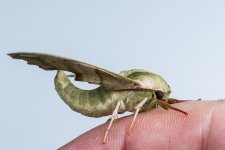Overread
Hunting birds with a canon
So I've recently picked up a Robinson Trap second hand and am keen to put it to some use. Weathers being a bit iffy at present, cloudy but a touch on the windy side, but I hope to get it out tonight.
So I'm out for any tips or advice people have from using theirs. I hope to set it up and leave it running overnight and come to it in the morning and see what its caught.
I can run power to it from indoors and put some plastic bags over the contacts/electrics to keep them protected from moisture. And also to use the rain guard on the trap to avoid damage from any falling moisture on the bulb when its hot. It says it shouldn't rain tonight but better safe than sorry.
Otherwise I can't think of any other differences to what I should do compared to my Heath Trap?
So I'm out for any tips or advice people have from using theirs. I hope to set it up and leave it running overnight and come to it in the morning and see what its caught.
I can run power to it from indoors and put some plastic bags over the contacts/electrics to keep them protected from moisture. And also to use the rain guard on the trap to avoid damage from any falling moisture on the bulb when its hot. It says it shouldn't rain tonight but better safe than sorry.
Otherwise I can't think of any other differences to what I should do compared to my Heath Trap?





